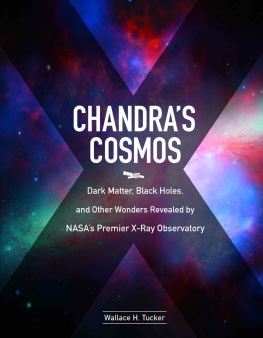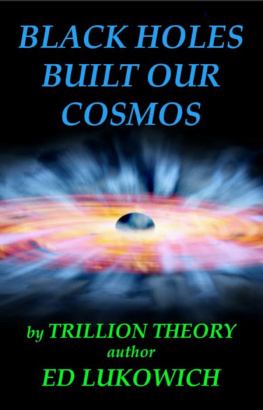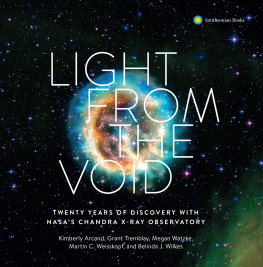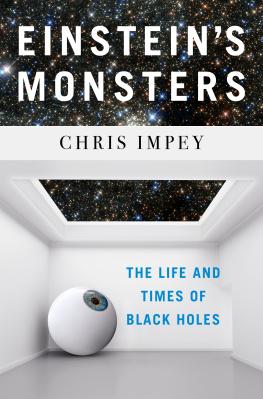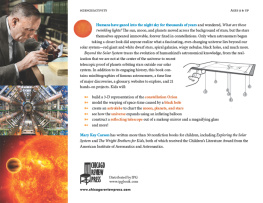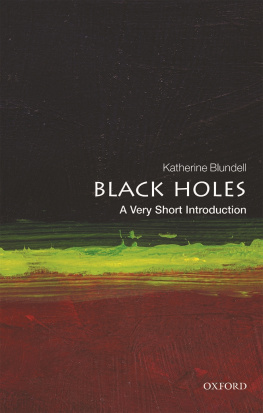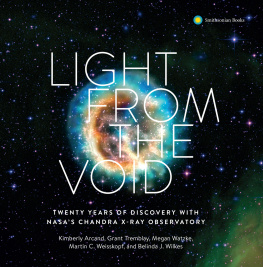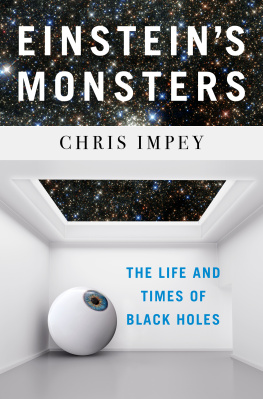2017 by Wallace H. Tucker
All rights reserved. No part of this publication may be reproduced or transmitted in any form or by any means, electronic or mechanical, including photocopying, recording, or information storage or retrieval system, without permission in writing from the publisher.
This book may be purchased for educational, business, or sales promotional use. For information, please write: Special Markets Department, Smithsonian Books, P.O. Box 37012, MRC 513, Washington, DC 20013
Published by Smithsonian Books
Director: Carolyn Gleason
Managing Editor: Christina Wiginton
Production Editor: Laura Harger
Edited by Gregory McNamee
Ebook design adapted from printed book designed and typeset by Jody Billert and Scribe Inc.
Indexed by Clive Pyne
Library of Congress Cataloging-in-Publication Data
Names: Tucker, Wallace H.
Title: Chandras cosmos : dark matter, black holes, and other wonders revealed
by NASAs premier X-ray observatory / Wallace H. Tucker.
Description: Washington, DC : Smithsonian Books, [2017] | Includes bibliographical references and index.
Identifiers: LCCN 2016016560 | ISBN 9781588345875
Subjects: LCSH: Chandra X-ray Observatory (U.S.) | X-ray astronomy.
Classification: LCC QB472.T8114 2017 | DDC 523.1dc23
LC record available at https://lccn.loc.gov/2016016560
Ebook ISBN978-1-58834-588-2
For permission to reproduce illustrations appearing in this book, please correspond directly with the owners of the works, as seen at the back of the book. Smithsonian Books does not retain reproduction rights for these images individually or maintain a file of addresses for sources.
Title pages: 30 Doradus, a.k.a. the Tarantula Nebula. See .
Endsheets: Cygnus A (colorized). See .
v4.1
CONTENTS
| IC 443 SUPERNOVA REMNANT
A wide-field view of a supernova remnant (SNR) made with X-ray (blue; from Chandra and ROSAT, the Roentgensatellite), radio (green; from the Jansky Very Large Array), and optical (red; from the Sloan Digitized Sky Survey) observations. Embedded near IC 443s lower edge is neutron star J0617, spewing out a cometlike wake of high-energy particles as it races through the SNRs multimillion-degree Celsius gas.
INTRODUCTION
You will behold through the telescope a host of other stars, which escape the unassisted sight, so numerous as to be almost beyond belief.
Galileo, The Starry Messenger, 1610
COOL STORIES FROM THE HOT UNIVERSE
In Florence, Italy, in the year 1609, the world changed. Using a small telescope, Galileo Galilei proved that Earth is not distinct from the universe but part of it, and that there is much more to the universe than we see with the naked eye. In the twentieth century, astronomers made another revolutionary discovery: Optical telescopes reveal only a portion of the universe. Telescopes sensitive to invisible wavelengths of light have detected microwave radiation from the Big Bang, infrared radiation from protoplanetary disks around stars, and X-rays from matter swirling into black holes.
On July 23, 1999, NASA launched the Chandra X-Ray Observatory aboard the space shuttle Columbia. A telescope designed to detect X-ray emissions from extraordinarily hot regions of the universeexploded stars, galaxy clusters, and matter around black holesChandra now orbits above Earths X-ray-absorbing atmosphere at an altitude of up to 86,500 miles. The Smithsonians Astrophysical Observatory in Cambridge, Massachusetts, is the site of the Chandra X-Ray Center, which operates the satellite, processes the data it collects, and distributes it to scientists around the world for analysis.
Since its launch, Chandra has given us a view of the universe that is largely hidden from telescopes sensitive only to visible light. It is a universe of violent and extreme environments, such as intense gravitational and magnetic fields around black holes, supernova shock waves, and titanic collisions between clusters of galaxies.
X-ray astronomy is one of the newest fields of astronomy. Earths atmosphere absorbs X-rays so strongly that it is impossible to observe them with ground-based telescopes. There is another problem: An X-ray photon has about a thousand times more energy than an optical photon, and because of this high energy, X-rays are difficult to focus onto a detector. X-ray telescopes therefore require extremely smooth mirrors, and Chandras mirrors are the smoothest ever made for any telescope.
As an X-ray telescope, Chandra collects and images X-rays that it detects from cosmic sources. In essence, Chandra is making the first ever high-resolution X-ray pictures of cosmic X-ray machines, images of a quality equivalent to those of large optical telescopes. This unique capability has transformed twenty-first-century astrophysics.
Chandra is part of a larger effort in which, for the first time, it is possible to make high-resolution images of star clusters, galaxies, and other cosmic phenomena with powerful telescopes tuned to many wavelengths, from radio to X-ray, including the infrared and visible bands in between. Chandras synergy with the Hubble Space Telescope, which can observe near-infrared, optical, and ultraviolet radiation, and the Spitzer Space Telescope, which detects infrared radiation, along with many other telescopes, is providing a much more complete view of the evolution of stars and galaxies as well as the extreme physics associated with black holes and cosmic explosions.
Since the launch of Chandra, as science spokesman for the Chandra X-Ray Center, I have been privileged to enjoy a front-row seat to the observatorys exploration of the universe. During this time, I have been profoundly impressed by the work of a growing community of ingenious scientists who have used Chandras unique and critical capabilities in the quest to understand our place in the universe and the fundamental laws that govern our existence.
My role has been primarily to explain or document some of the successes in this quest, and from time to time I have been asked to put together lists of top ten Chandra stories. On one of these occasions, a colleague suggested that I should prepare a list of Chandras coolest discoveries. Not being an especially cool personat least I dont think Im cool, and, as I understand it, if youre cool, you know itI was a little perplexed. My reaction confirmed one of Malcolm Gladwells rules of cool: It can only be observed by those who are themselves cool (1997).
As I pondered what might constitute cool discoveries, I came across these words of wisdom from best-selling author Stephen King: The meaning of cool is beyond definitionbeyond modification. It just is, man (2007). Not much help there. The words of William Gibson, prophet of the cyberpunk subgenre of noir fiction, seemed more appropriate: Secrets are the very root of cool (2007). This fits in nicely with something an unquestionably cool scientist, Albert Einstein, once said: The most beautiful experience we can have is the mysterious. It is the fundamental emotion that stands at the cradle of true art and true science (1949).

